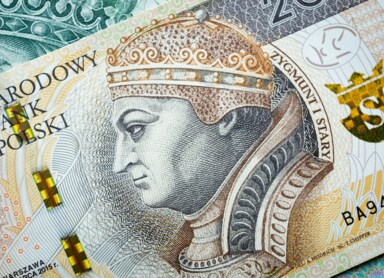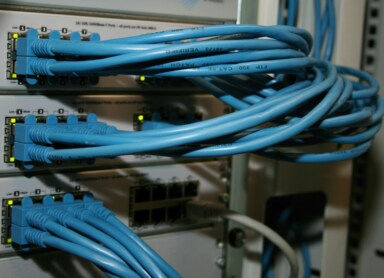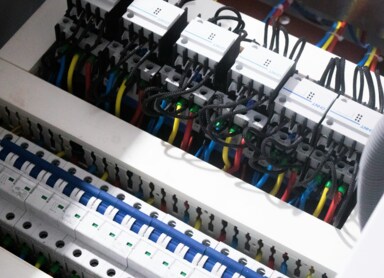Electricity – everything you need to know about it
Moc prądu to jedno z kluczowych pojęć w elektroenergetyce i elektronice. Dobrze je znać zarówno prowadząc gospodarstwo domowe, jak i przedsiębiorstwo. Dzięki znajomości tego zagadnienia można zrozumieć, w jaki sposób efektywnie zarządzać zużyciem energii elektrycznej, żeby zarówno urządzenia elektryczne, jak i całe instalacje służyły nam jak najdłużej w pełnej wydajności. Dlaczego moc prądu ma duże znaczenie dla naszej codzienności? Jak przeliczać moc na zużycie prądu? I dlaczego nie tylko inżynierowie powinni wiedzieć z „czym się ją je”? O tym w poniższym artykule.
Electric power – definition and basic concepts
Electric power is a measure of the amount of electrical energy transferred per unit of time. In simple terms, it can be defined as the amount of electricity consumed or generated by a given electrical device. In the SI system, the unit of power is the watt. To calculate power (expressed in watts), multiply the electrical voltage (expressed in volts) by the electrical current (expressed in amperes). This simple relationship combines two key physical forces. A device works properly when it is supplied with the right amount of power. How much power is that? This information can be found in the technical specifications included with every electrically powered device.
There are several key concepts related to electrical power that are also worth knowing. Electrical voltage is the difference in electrical potential between two points in a circuit. In other words, it is the force that causes current to flow in a circuit. Sockets in Poland have an electrical voltage of 230 V, which is usually a constant value. Current is the amount of electrical charge flowing through a conductor in a given time. Electrical energy is a unit of work done by an electric current – it is measured in joules or kilowatt-hours. Resistance is the electrical resistance existing in a conductor, which limits the flow of current throughout the circuit.
In alternating current circuits, we distinguish between three types of power: active power (the energy actually consumed), reactive power (related to electric and magnetic fields, which does not perform work but is essential for the proper functioning of devices), and apparent power (the geometric sum of active and reactive power).
Electric power can be influenced by several factors, such as: supply voltage, i.e., the level of voltage delivered to a given electrical circuit, load, i.e., the number of devices connected to the circuit, and efficiency of devices, in other words, the amount of energy lost due to the construction of the devices and wiring.
Why is electrical power important?
Understanding electrical power is crucial for the safety of electrical installations. Knowing how much energy individual devices consume helps prevent overloads that could lead to failures or even fires. This knowledge allows users to more effectively plan the distribution of load in the electrical network and apply protective measures that minimize the risk of damage to the entire installation.
Awareness of electrical power supports long-term planning of electricity costs, which is especially important in today’s economic conditions. By analyzing the power consumption and energy efficiency of devices, it becomes possible to implement solutions that optimize electricity usage—such as replacing equipment with more energy-efficient models or using smart home technologies.
As a result, understanding electrical power not only enhances the comfort of using electrical devices but also promotes a more sustainable approach to energy use, bringing both financial and environmental benefits.
How to calculate electricity consumption? What does power have to do with it?
Knowing the power rating of an electrical device is essential for calculating electricity consumption. Simply put, to determine the amount of energy used (expressed in kilowatt-hours), you multiply the device’s power (in kilowatts) by the amount of time it operates. It’s important to note that a device’s power is usually indicated on its nameplate or in its technical specifications. If the power is listed in watts, you divide by 1000 to convert it to kilowatts — in other words, 1000 W equals 1 kW.
Power indicates the potential intensity of energy use. What does that mean? A device with a power rating of 1500 W will consume more energy than a 1000 W device, assuming both run for the exact same amount of time.
To accurately monitor a device's energy usage, it's essential to consider not only its electrical power but also how long it operates. This knowledge enables conscious energy management at home or in the workplace. Based on such analysis, you can identify which devices have the greatest impact on electricity consumption and decide whether to reduce their usage time or replace them with more energy-efficient alternatives.
Read also: Jak czytać fakturę za prąd? Instrukcja krok po kroku
How to calculate power in household electrical installations?
By adding up the power ratings of all electrical devices (as listed on nameplates or in the technical specifications), you can determine the total installed power in a given household.
This power is typically estimated based on the building's design and intended use. In other words, in the case of a single-family home, the electrical installation must be designed to "handle" all the equipment that will be used in the household—this includes lighting, household appliances, and other electrical devices.
Estimating the total installed power is important for ensuring the safe execution of the electrical installation, planning the appropriate number and type of sockets, and selecting the correct fuses for each circuit.
Differences between power and current – what’s worth knowing?
Power and electric current are terms that can easily be confused, but they refer to completely different concepts. Electric current (measured in amperes) indicates how many electrons flow through a conductor over a given period of time. The higher the current, the more energy the electrons carry. Household appliances require different levels of current to operate efficiently. For example, an LED lamp needs much less current than an electric kettle.
Electric power, on the other hand, defines how much energy is used or generated over time. In other words, it shows how much work a device performs. You can usually find a device’s power rating on its nameplate.
Understanding the concept of electrical power helps you better grasp how electrical devices work and how to use electricity efficiently. Calculating power is essential both in everyday life and in the design of complex electrical systems. It's useful in households as well as in businesses, allowing for the design and implementation of safe electrical installations and control over energy bills.
At first glance, distinguishing between power, current, and voltage might seem complicated. However, it's worth becoming familiar with these basic concepts to make more informed daily decisions and better understand where your electricity usage—and costs—are coming from.






